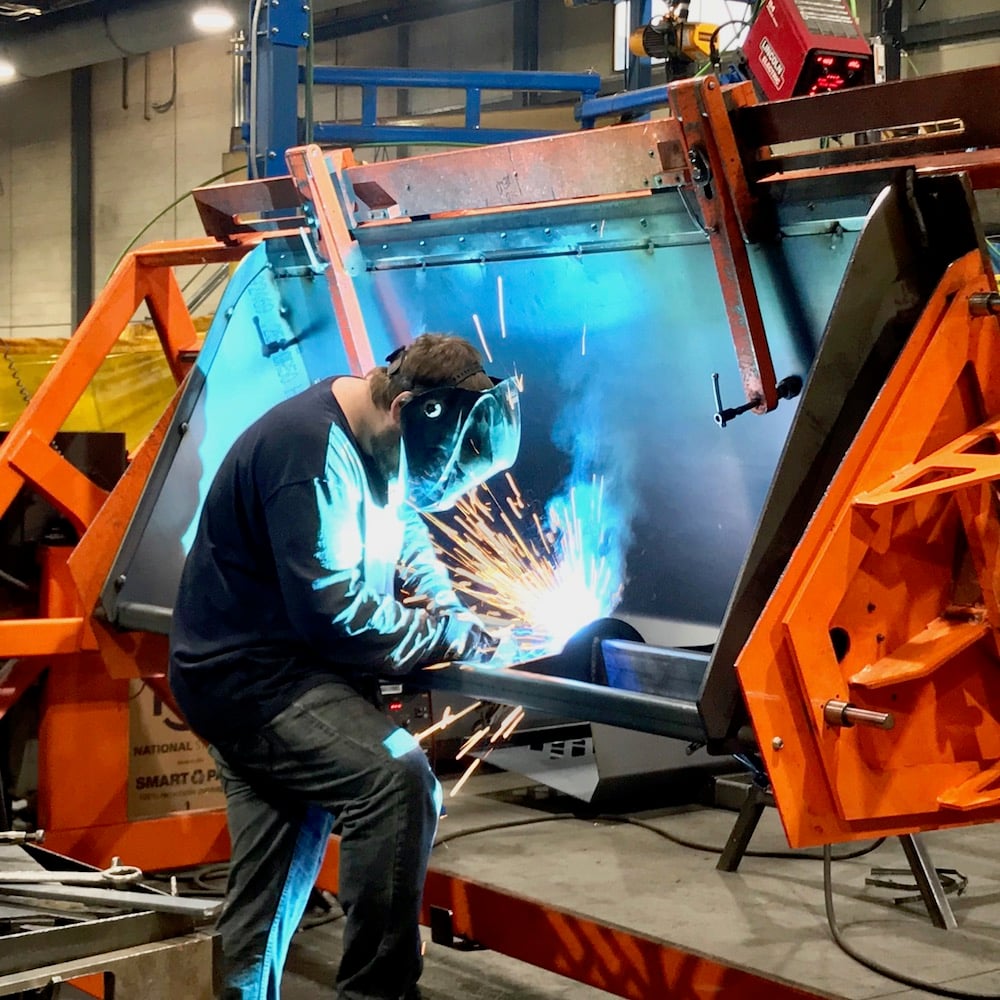My wife and I recently dined at an excellent restaurant. The “Wow Factor” of the food was off-the-charts. While eating, something occurred to me: The meal was delicious for the same reasons that Virnig attachments are so superior to the competition—they both use CHOICE INGREDIENTS and SKILLED CHEFS.
Whether we’re designing a bucket, snow handler, fork, brush cutter, auger, tree puller or trencher, each attachment is like an item on a menu that gets specific ingredients and precise preparation.
The Main Ingredient: Steel
Just as a fine restaurant sources the freshest meats and vegetables, Virnig insists on high-quality steel. It’s the backbone of every attachment. While other builders primarily use A36 steel on their attachments, we step it up to Grade 50 and Grade 80 steel.
A36
Because of its low cost, A36 steel is used in many different industries for a variety of applications. The most common welding methods for A36 are also the cheapest and easiest. They include shielded metal arc welding (SMAW or stick welding), gas metal arc welding (GMAW or MIG welding) and oxyacetylene welding. A36 is tough, sure, and you probably couldn’t tell the difference between an attachment made from A36 and one crafted from Grade 50 or 80 by looking at it. You’ll sure experience the difference in performance and longevity compared with an attachment built from higher-grade steels.

Grade 50
At a minimum, Virnig utilizes high-strength Grade 50 steel plate for all attachments. The definition of Grade 50 is that the steel can withstand 50,000 pounds of stress per square inch before it becomes permanently deformed. Plus, less of this material is needed to fulfill a given strength requirement when compared to A36. You get a lighter attachment without sacrificing strength or durability.
Grade 50 is a Columbium-Vanadium steel that’s also noted for its increased resistance to atmospheric corrosion. It's known as the “Workhorse" grade, it’s commonly used in heavy construction equipment, building structures, heavy-duty anchoring systems, truck frames, poles, boom sections, structural steel shapes and other applications that require a high strength-to-weight ratio.
Grade 80
When Virnig designs an attachment that needs to be strong without being massive or heavy, we dive into our cache of plate and round stock Grade 80 steel. Think of it as the Filet Mignon of ingredients in a chef’s kitchen. Grade 80 has an incredible strength-to-weight ratio, making it the ideal solution in certain structural design applications where thinner components are required.
Seasoned Chefs: Engineers & Fabricators
Every Virnig attachment begins with our engineers who develop the perfect “Recipe” for the job. All design and testing takes place right here at Virnig, so we maintain total control of each part from start to finish.
We utilize 3D modeling software to ensure exact tolerances and a perfect fit. Plus, we invest in the latest structural analysis software that allows us to apply virtual loads to each attachment design. The software identifies low-stress and high-stress areas, from which we can apply precise steel Grades and thicknesses to ensure strength, while also reducing waste and overbuilding. We know exactly what an attachment is capable of before it even gets built!
All great chefs have a team of expert cooks working with them. The same applies to the manufacturing crew at Virnig. Inside our 28,000 square-foot facility, skilled craftsmen and women use computer-driven lasers for precise steel cutting that virtually eliminates waste product. This ultimately saves our customers money. Then we combine robotics and skilled welders for the assembly process. No attachment leaves the “kitchen” unless it’s perfect.
Presentation: The Final Touches
After an attachment is built, it goes through a large washer to remove any loose particles. A conveyor then takes it through a drying system and on to a powder-coating station. During the final finishing process, the powder paint sticks via electrostatic charge to the phosphorus coating and not to the bare steel. This gives the attachments a big boost of corrosion resistance. And, every new attachment looks as great as it performs.
The next time you sit down to an unforgettable meal, tip your hat to the choice ingredients and the passion of the hands that turned those ingredients into culinary greatness. The next time you hook into a Virnig attachment, do the exact same thing.
Bon appétit and good luck on your projects.

